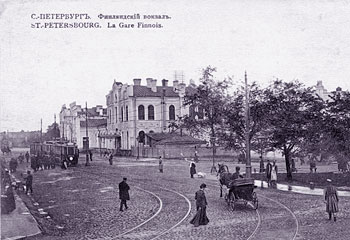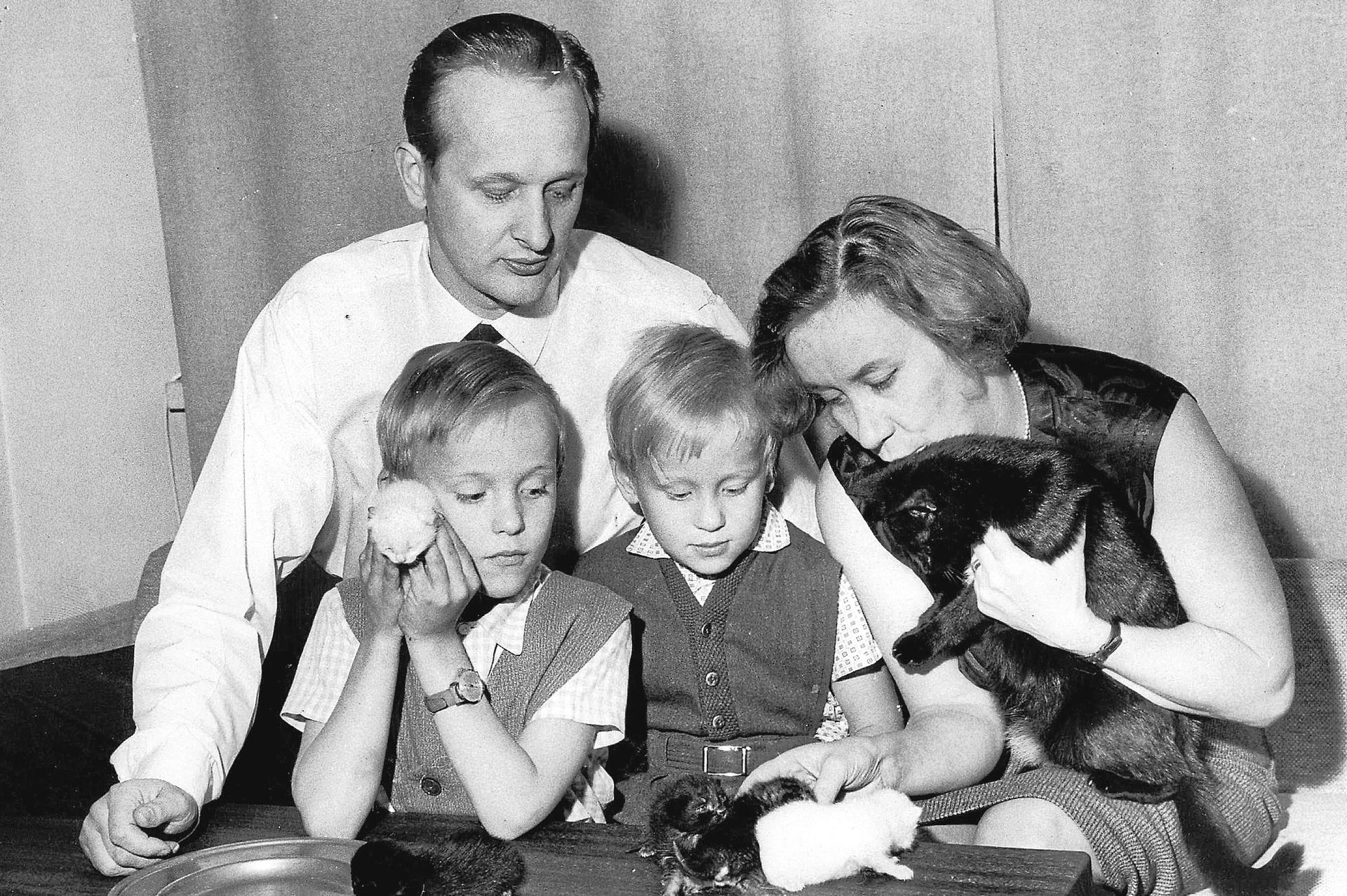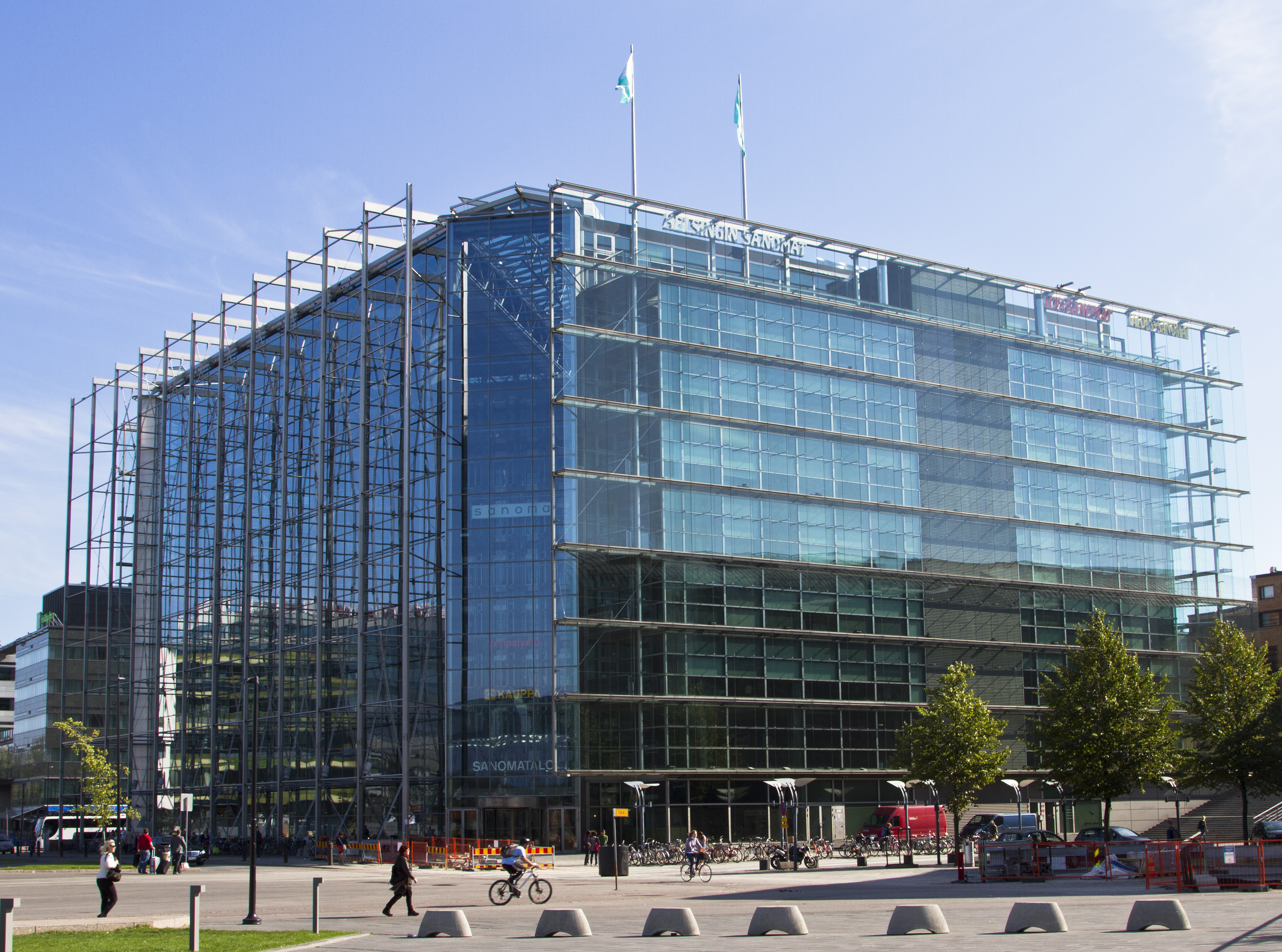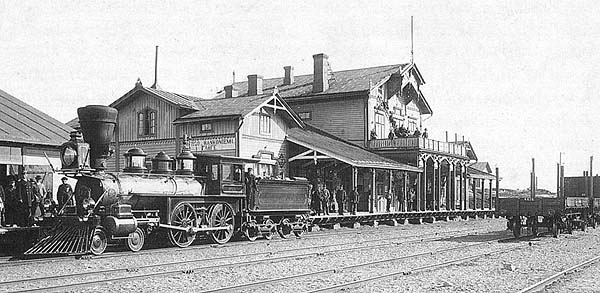|
Lokomo
Oy Lokomo Ab was a Finnish manufacturer of railroad equipment and steam locomotives, situated in Tampere, Finland. The company was founded in 1915 by a group of Finnish businesspeople, including Jalmar Castrén and Emil Aaltonen. The Lokomo factories in Tampere produced the MIR submersibles for the Soviet Academy of Sciences. They later merged into the Metso Corporation. Jaakko Syrjä was a worker for the company. See also * Finnish Railway Museum * VR Group * List of Finnish locomotives * Jokioinen Museum Railway * List of railway museums Worldwide * Heritage railways * List of heritage railways * Restored trains * Hanko–Hyvinkää railway * History of rail transport in Finland * VR Class Pr1 * VR Class Hr1 * VR Class Tr1 * VR Class Tk3 * VR Class Hr11 The VR Class Hr11 was the first class of line-haul diesel locomotives used by Valtionrautatiet (Finnish State Railways). Only five units were built, all delivered by Valmet in 1955. The Maybach diesel engines used in th ... [...More Info...] [...Related Items...] OR: [Wikipedia] [Google] [Baidu] |
List Of Finnish Locomotives
This is a list of locomotives and multiple units that have been used in Finland. VR Group (privatised in 1995, previously ''Valtionrautatiet'', Finnish state railways) had a monopoly on passenger traffic until 1.1.2021, but is currently the only passenger operator on the Finnish rail network. Some trainsets are however owned by other companies such as or Karelian Trains. The Finnish railways, as with the Russian railways, are laid to the same gauge of . Electric locomotives Diesel locomotives Petrol-Paraffin locomotives Petrol-Paraffin locomotive references Data from: * Finnish Railway Museum official website Steam locomotives Steam locomotive references Data from: * Finnish Railway Museum official website * Finnish website with locomotive technical data Electric multiple units Diesel multiple units See also * Finnish Railway Museum * Hanko–Hyvinkää railway * History of rail transport in Finland * Jokioinen Museum Railway Literature * * Ref ... [...More Info...] [...Related Items...] OR: [Wikipedia] [Google] [Baidu] |
VR Class Tr1
The VR Class Tr1 is a class of heavy freight locomotive built in Finland and Germany. Before 1942 VR Class Tr1s originally had the class name R1. They were nicknamed “Risto”, after the Finnish President Risto Ryti. They were numbered 1030–1096. 67 locomotives were built between 1940–57 by Tampella, Lokomo and Arnold Jung Lokomotivfabrik GmbH, Jungenthal of Germany. The "Risto" is a product of the same era as the express train locomotive Ukko-Pekka (Hr1), and they share a similar appearance as well as several common components. Because of their high tractive effort the Tr1 locomotives were also called upon for passenger service of a heavy intermediate character. Tr1 1096 was the last steam locomotive manufactured for VR in 1957. Tr1 locomotives were withdrawn during the 1970s, with the last being withdrawn in 1975. Two Tr1 locomotives are located in the United Kingdom. One is owned by millionaire railway enthusiast David Buck, while another lies abandoned in a secluded f ... [...More Info...] [...Related Items...] OR: [Wikipedia] [Google] [Baidu] |
VR Class Hr1
The Hr1 class (original classification P1) was the largest passenger express steam locomotive built in Finland. Twenty-two were built between the years 1937–1957. They were numbered 1000–1021. In the 1930s, there was a need for faster and heavier express trains in Finland, and the Hv1–Hv3 classes were not powerful enough to fill the need. Lokomo Oy in Tampere built first two prototypes, and after successful trials 20 more were built. Most of the locomotives were fitted with Wagner-type smoke deflectors, but the last two, which were equipped with roller bearings, had Witte-type deflectors. The class's nickname was , meaning approximately "(respected) Grandpa Pekka", after the President of Finland Pehr Evind Svinhufvud. The Hr1 was built for coal firing, but during the coal shortage after the war in 1945, birch wood was used as fuel. Larger chimneys needed for extinguishing wood sparks were temporarily fitted. The Hr1s were the most important express steam locomotive and ... [...More Info...] [...Related Items...] OR: [Wikipedia] [Google] [Baidu] |
Finnish Railway Museum
The Finnish Railway Museum ( fi, Suomen Rautatiemuseo) is located in Hyvinkää, Finland. It was founded in 1898 and located in Helsinki. The museum was moved to Hyvinkää in 1974. The museum is on the original station and yard site of the Hanko–Hyvinkää railway. In addition to the station building, there is a roundhouse and several other preserved buildings, mainly from the 1870s. The museum also has a live steam backyard railroad track, where train rides are offered to the public during special run days in the summer months. Exhibits See also * Jokioinen Museum Railway * Hanko–Hyvinkää railway The Hanko–Hyvinkää Railroad, 1872–1875 ( sv, Hangö–Hyvinge järnväg), was Finland's first privately funded railway. Hanko is the southernmost town in Finland. Hanko has a seaport which, thanks to its location, can be used for the ... External links Finnish Railway MuseumOfficial website* ttp://commons.wikimedia.org/wiki/Steam_locomotives_of_Finland Photogr ... [...More Info...] [...Related Items...] OR: [Wikipedia] [Google] [Baidu] |
Emil Aaltonen
Emil Aaltonen ( Widell until 1890; b. 29 August 1869 — d. 16 December 1949) was a prominent Finnish industrialist and philanthropist, who went from humble beginnings to own and run the largest shoe manufacturing business of its time in the Nordic region. Early life Emil Widell was born in Sääksmäki (today part of Valkeakoski) to a farming family of modest means, as the third of seven children. The family lost their farm in the aftermath of the Finnish famine of 1866–68, and Emil's father had to take a job as a railway worker. He died relatively young, leaving his widow to care for the children. Consequently the young Emil was expected also to contribute to the household, and started as a shoemaker's apprentice at the age of 13. By age 19, he had qualified as a master craftsman, and set up his own workshop in the town of Hattula. Widell changed his original Swedish surname to the Finnish Aaltonen in 1890, as was common during the Finnicization of names in the late 19th a ... [...More Info...] [...Related Items...] OR: [Wikipedia] [Google] [Baidu] |
VR Class Tk3
The Finnish VR Class Tk3 (original classification 'K5') was a 2-8-0 light freight locomotive. It was the most numerous steam locomotive class in Finland with 161 built. 100 locomotives were constructed between 1927 and 1930,Katajisto, Juhani. (1985). ''Eilispäivän kulkuneuvoja''. p. 42. Hämeenlinna:Tietoteos. . with a further 61 ordered and constructed 1943–53.Sakari K. Salo:Höyryveturikirja, They were numbered 800–899, 1100–1118, and 1129–1170. They were designed for a low axle load of just . This allowed them to operate on lightly laid secondary lines, but during their many years of service, up to the end of the steam era, they were also widely used on main lines hauling slow passenger trains that made frequent stops. They were affectionately called "Pikku-Jumbo" (The Little Jumbo) because of their good performance despite their low weight. They had a low fuel consumption (usually Tk3s used birch wood) and good riding characteristics. They also had good steaming ch ... [...More Info...] [...Related Items...] OR: [Wikipedia] [Google] [Baidu] |
VR Class Pr1
VR Class Pr1 (original classification N1, nickname ''Paikku'', from Finnish “paikallinen”, local) was a tank steam locomotive for local passenger services of Valtionrautatiet, Finnish railways. Ordering and delivery In the 1920s, VR was concerned about the low power and speed of their existing class Vk1-3 class locomotives that were used in local services, especially on the Helsinki commuter rail services. A decision was reached to order a new and powerful, by standards of that time, local traffic locomotive from Hanomag with the intention of licence manufacture of more units by Finnish locomotive works. At the same time, a shunting locomotive based on a similar design, VR Class Vr3, Vr3, was also ordered. The classes share many parts, including as frames, boilers and spaces for coal, but wheel arrangement, domes and top speed are very different because of their completely different roles. The locomotive was of tank design with small coal bunker in the rear, which limited ope ... [...More Info...] [...Related Items...] OR: [Wikipedia] [Google] [Baidu] |
History Of Rail Transport In Finland
:''This article is part of the history of rail transport by country series'' The history of rail transport in Finland began on January 31, 1862, with the opening of the railway line between Helsinki and Hämeenlinna. By 1900 most of the future main lines had been constructed, including the line to St. Petersburg.4rail.net - Reference - Finland - Railway History ''4rail.net'' By the time of the birth of the new Finnish Republic in 1917 lines connected all major cities, major ports, and reached as far as the Swedish border, and inner Finland as far north as Kontiomäki in region, as well as eastwards i ... [...More Info...] [...Related Items...] OR: [Wikipedia] [Google] [Baidu] |
Steam Locomotive
A steam locomotive is a locomotive that provides the force to move itself and other vehicles by means of the expansion of steam. It is fuelled by burning combustible material (usually coal, oil or, rarely, wood) to heat water in the locomotive's boiler to the point where it becomes gaseous and its volume increases 1,700 times. Functionally, it is a steam engine on wheels. In most locomotives, the steam is admitted alternately to each end of its cylinders, in which pistons are mechanically connected to the locomotive's main wheels. Fuel and water supplies are usually carried with the locomotive, either on the locomotive itself or in a tender coupled to it. Variations in this general design include electrically-powered boilers, turbines in place of pistons, and using steam generated externally. Steam locomotives were first developed in the United Kingdom during the early 19th century and used for railway transport until the middle of the 20th century. Richard Trevithick ... [...More Info...] [...Related Items...] OR: [Wikipedia] [Google] [Baidu] |
Jaakko Syrjä
Jaakko Syrjä (7 March 1926 – 22 May 2022) was a Finnish writer. He served as the president of the Union of Finnish Writers from 1975 to 1980. Biography Syrjä was born in Pälkäne, the son of Martta née Niemiö and Juho Nestori Syrjä, who were both cattle traders and farmers. At the age of seven, he and his family moved from Hirsilä to Korkeakoski. Syrjä then moved to Tampere, where he worked for the railroad equipment and steam locomotive manufacturing company Lokomo. In 1953 his story "There came the Bear" win Best Short Story in the Pirkanmaa Writing Competition. He later worked as an editor for Gummerus and WSOY. Syrjä was a member of the Union of Finnish Writers from 1970 to 1975, and president from 1975 to 1980. He worked with novelist Kalle Päätalo adapting works for publication. Syrjä was a member of the Väinö Linna Society. Syrjä won the City of Tampere Literature Prize three times from 1956 to 1988. He also was a winner of the Thanks for the Boo ... [...More Info...] [...Related Items...] OR: [Wikipedia] [Google] [Baidu] |
Helsingin Sanomat
''Helsingin Sanomat'', abbreviated ''HS'' and colloquially known as , is the largest subscription newspaper in Finland and the Nordic countries, owned by Sanoma. Except after certain holidays, it is published daily. Its name derives from that of the Finnish capital, Helsinki, where it is published. It is considered a newspaper of record for Finland. History and profile The paper was founded in 1889 as ''Päivälehti'', when Finland was a Grand Duchy under the Tsar of Russia. Political censorship by the Russian authorities, prompted by the paper's strong advocacy of greater Finnish freedoms and even outright independence, forced Päivälehti to often temporarily suspend publication, and finally to close permanently in 1904. Its proprietors re-opened the paper under its current name in 1905. Founded as the organ of the Young Finnish Party, the paper has been politically independent and non-aligned since 1932. During the Cold War period ''Helsingin Sanomat'' was among the Finn ... [...More Info...] [...Related Items...] OR: [Wikipedia] [Google] [Baidu] |
Hanko–Hyvinkää Railway
The Hanko–Hyvinkää Railroad, 1872–1875 ( sv, Hangö–Hyvinge järnväg), was Finland's first privately funded railway. Hanko is the southernmost town in Finland. Hanko has a seaport which, thanks to its location, can be used for the longest possible time during the sometimes very severe, and freezing, Finnish winters. Because all the other Finnish seaports might be frozen solid during the winter, there was an anticipation for a large amount freight transit traffic. As such, a decision was made to privately fund the railway from Hanko to the Finnish State Railways' Helsinki–Hämeenlinna line, with the connection at Hyvinkää. Work on the new railway began in 1872 with the inaugural run being on October 8, 1873. Owing to insufficient funds, the private company soon got into financial trouble. Facing almost certain liquidation, the railroad company was sold to the Finnish State Railways in 1875. Today, the Finnish Railway Museum is based at the site of the original ... [...More Info...] [...Related Items...] OR: [Wikipedia] [Google] [Baidu] |







